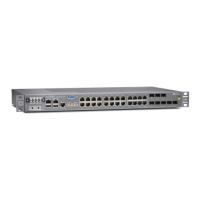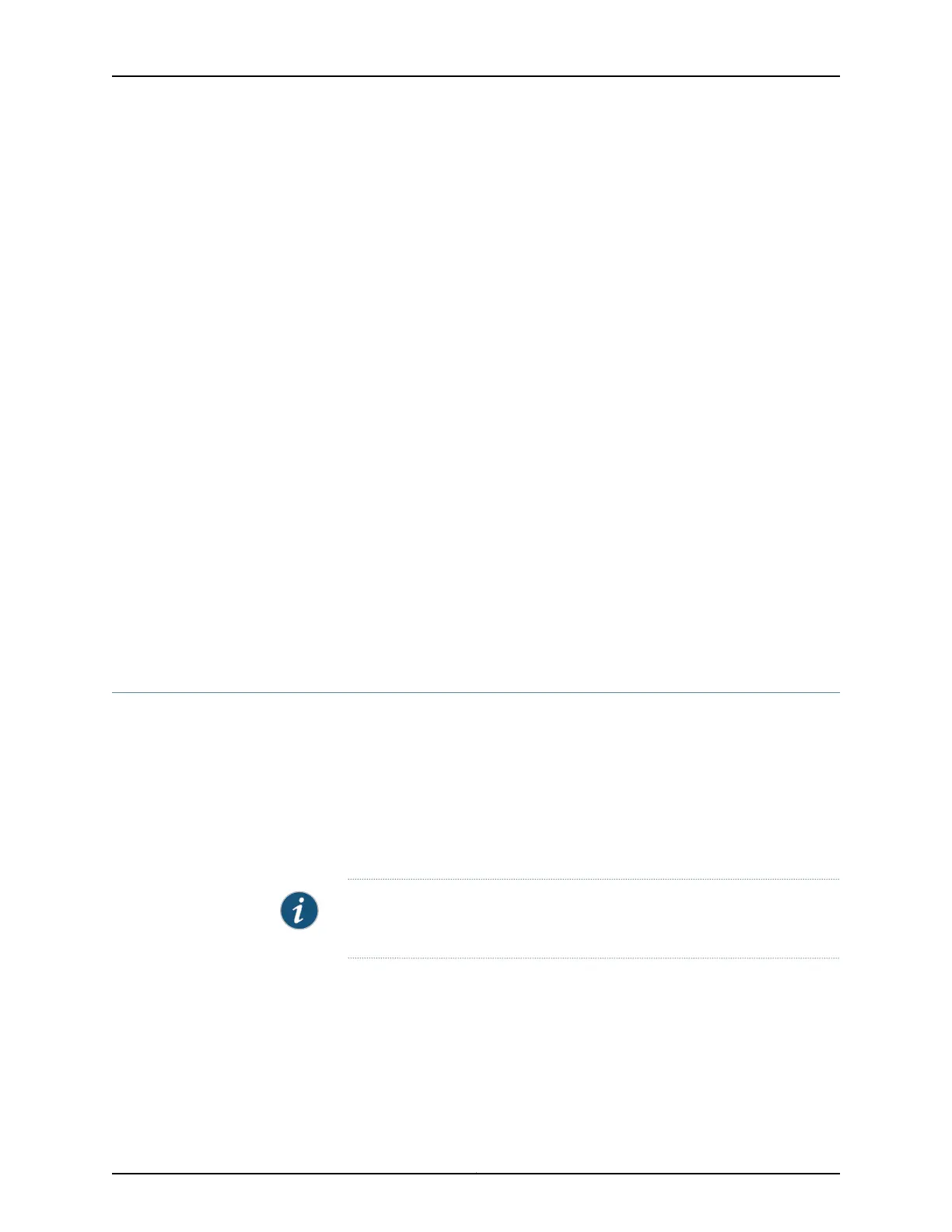address or port are from a different source, you are free to assign a different external
address.
Related
Documentation
Network Address Translation Overview on page 999•
• Network Address Port Translation Overview on page 1001
• Enabling Inline Services Interface on ACX Series on page 1008
• Understanding Service Sets on page 1028
• Service Filters in ACX Series on page 1035
• Guidelines for Applying Service Filters on page 1036
• Service Filter Match Conditions for IPv4 Traffic on page 1038
• Service Filter Actions on page 1039
• Network Address Translation Address Overload in ACX Series on page 1001
• CoS for NAT Services on ACX Series Universal Access Routers on page 887
• Network Address Translation Constraints on ACX on page 1003
• Network Address Translation Rules Overview on page 1004
• Configuring Service Sets for Network Address Translation on page 1030
• Configuring Service Sets to Be Applied to Services Interfaces on page 1031
• Configuring Queuing and Scheduling on Inline Services Interface on page 1040
Enabling Inline Services Interface on ACX Series
The inline services interface is a virtual interface that resides on the Packet Forwarding
Engine. The si- interface makes it possible to provide NAT and IPsec services without
using a special services PIC.
To configure inline services interface, you define the service interface as type si-
(service-inline) interface. You must also reserve adequate bandwidth for the inline services
interface. This enables you to configure both interface or next-hop service sets used for
NAT and IPsec services.
NOTE: In ACX Series routers, you can configure only one inline services
interface as an anchor interface for NAT and IPsec sessions: si-0/0/0.
To enable inline services interface:
1. Access an FPC-managed slot and the PIC where the interface is to be enabled.
[edit chassis]
user@host# edit fpc slot-number pic number
Copyright © 2017, Juniper Networks, Inc.1008
ACX Series Universal Access Router Configuration Guide

